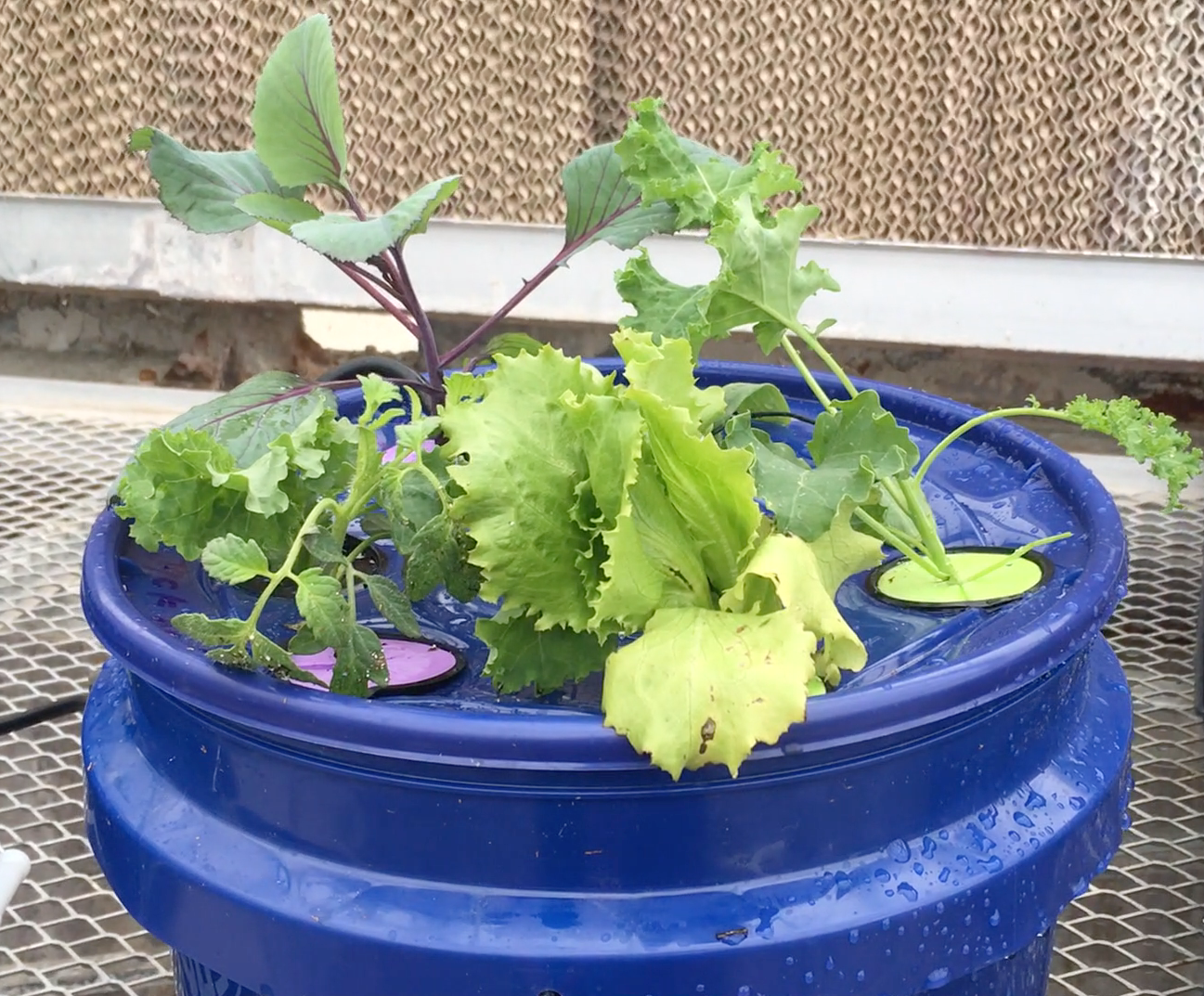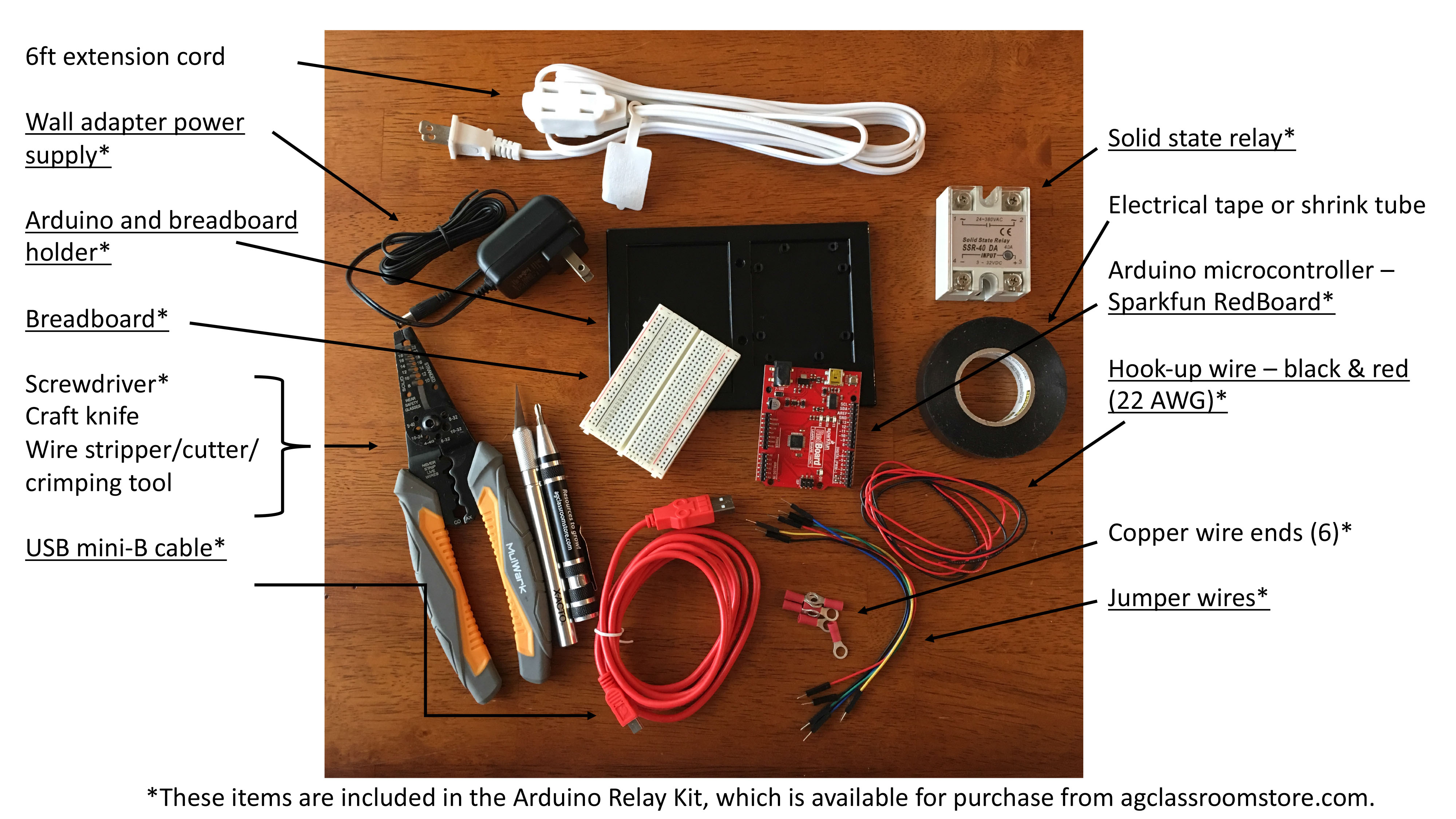Aeroponic Engineering and Vertical Farming (Grades 9-12)
Students will use the Engineering Design Process to develop and construct an aeroponic garden to grow a food crop. Students will develop and apply an understanding of plant anatomy and physiology related to plant growth and ultimately discuss the possibilities and limitations of using vertical farming to produce our food.

Background
Lesson Activities
Recommended Companion Resources
Credits
Author
Joe Furse, Andrea Gardner, and Debra Spielmaker | National Center for Agricultural Literacy (NCAL)
Sources
Ag Facts:
- http://www.worldometers.info/water/
- Bugbee, B. (2013, November 19). Turning water into food. Retrieved from https://www.youtube.com/watch?v=qEbdv3bFKww
Background:
- http://aeroponicsdiy.com/aeroponics-misting-frequency-for-root-growth/
- http://www.aeroponics.com/siteindex2010-12.htm
- https://gardenpool.org/online-classes/how-to-make-a-simple-aeroponics-system
- The following link provides an example of a "5-gallon bucket Aeroponics system" that is the basis of the design challenge for this unit. https://gardenpool.org/online-classes/how-to-make-a-simple-5-gallon-bucket-aeroponics-system
- Garden Pool (n.d.) How to make a simple 5 gallon bucket aeroponics system. Retrieved from https://gardenpool.org/online-classes/how-to-make-a-simple-5-gallon-bucket-aeroponics-system
- Khokhar, T. (2017, March 22). Chart: Globally, 70% of fresh water is used for agriculture [Weblog comment]. Retrieved from https://blogs.worldbank.org/opendata/chart-globally-70-freshwater-used-agriculture
- Massie, L. (n.d.) Aeroponics misting frequency for root growth [Weblog comment]. Retrieved from http://aeroponicsdiy.com/aeroponics-misting-frequency-for-root-growth/
Standards
Indiana Content Area Standards
-
English Language Arts.Grade 9-10.RV.1
Acquire and accurately use academic and content-specific words and phrases at the college and career readiness level; demonstrate independence in gathering vocabulary knowledge when considering a word or phrase important to comprehension or expression.
- Vocabulary in Literature and Nonfiction Texts.9-10.RV.3.2: Determine the meaning of words and phrases as they are used in a nonfiction text, including figurative, connotative, denotative, and technical meanings; evaluate the effectiveness of specific word choices on meaning and tone in multiple and varied contexts.
-
English Language Arts.Grade 9-10.SL.1
Listen actively and adjust the use of spoken language (e.g., conventions, style, vocabulary) to communicate effectively with a variety of audiences and for different purposes.
- Comprehension.9-10.SL.3.1: Analyze multiple sources of information presented in diverse media and formats while evaluating the credibility and accuracy of each source.
- Discussion and Collaboration.9-10.SL.2.1: Initiate and participate effectively in a range of collaborative discussions on grade-appropriate topics, texts, and issues, building on others ideas and expressing personal ideas clearly and persuasively.
-
English Language Arts.Grade 11-12.RV.1
Acquire and accurately use academic and content-specific words and phrases at the college and career readiness level; demonstrate independence in gathering vocabulary knowledge when considering a word or phrase important to comprehension or expression.
- Vocabulary in Literature and Nonfiction Texts.11-12.RV.3.2: Determine the meaning of words and phrases as they are used in a nonfiction text, including figurative, connotative, denotative, and technical meanings; evaluate the cumulative impact of how an author uses and refines the meaning of a key term or terms over the course of a text.
-
English Language Arts.Grade 11-12.SL.1
Listen actively and adjust the use of spoken language (e.g., conventions, style, vocabulary) to communicate effectively with a variety of audiences and for different purposes.
- Comprehension.11-12.SL.3.1: Synthesize multiple sources of information presented in diverse media and formats in order to make informed decisions and solve problems, evaluating the credibility and accuracy of each source and accounting for any discrepancies among the data.
- Discussion and Collaboration.11-12.SL.2.1: Initiate and engage in a range of collaborative discussions on grade-appropriate topics, texts, and issues, building on others ideas and expressing personal ideas clearly and persuasively.

